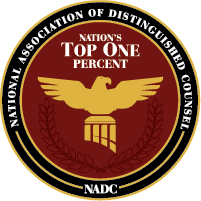Contaminants in Valsartan and Zantac medications
In July 2018, the FDA issued its largest ever class 1 recall due to valsartan being contaminated with the carcinogenic impurity N-nitrosodimethylamine (NDMA). Nearly 2 million Americans received recall letters regarding the FDA’s urgent recall of the blood pressure medication. Fast forward to September 2019, the same cancer-causing impurity was detected in various batches of ranitidine. This discovery led to a request by the FDA for immediate removal of all prescription and over the counter ranitidine products in April 2020. The potential side effects and injuries due to NDMA impurities of these valsartan and ranitidine products continue to be investigated.
What is NDMA?
N-nitrosodimethylamine, or NDMA, is a semi-volatile organic chemical that forms naturally or as a byproduct of industrial processes. NDMA is classified as a B2 probable human carcinogen and is known to cause cancer in lab animals. It is also an environmental contaminant found in water and foods such as meats, vegetables, and dairy products. NDMA can be produced through natural processes as well as through industrial processes such as the chlorination of wastewater and drinking water. Pesticide manufacturing plants, rubber manufacturers, and fish processing facilities are some of the industrial sources that may unintentionally produce NDMA as a byproduct.
The primary pathway of human exposure to NDMA is the oral route such as ingesting contaminated food and water. This exposure can occur in various ways such as ingesting food that contains nitrosamines or alkylamines which can cause NDMA formation in the stomach, drinking contaminated water, and using cosmetic products that contain NDMA.
The pure form of NDMA is not currently produced in the United States except for research purposes. The substance was formerly used to create rocket fuel, but production was halted when high levels of NDMA was discovered in soil, water, and air samples near the manufacturing plant. Exposure to NDMA has varying health impacts. Potential symptoms of NDMA overexposure include headache, fever, vomiting, enlarged liver, and reduced liver function. Based on animal studies in rats and mice, NDMA has the potential to cause cancer in humans, as it has been shown to cause tumors in rodents and other mammals.
How did Valsartan become contaminated?
Valsartan is an angiotensin II receptor blocker (ARB) which is utilized to help control blood pressure. Valsartan, as well as related products like losartan and Irbesartan, were recalled due to containing trace amounts of N-nitrosodimethylamine (NDMA) or N-nitrosodiethylamine (NDEA). It was discovered that the impurities formed during the manufacturing process came from multiple manufacturers of the active pharmaceutical ingredients (APIs), then sold to companies to create the final product for consumers.
The four API manufacturers that produced the impure drugs are Hetero Labs, Mylan Laboratories, Aurobindo Pharma, and Zhejiang Huahai Pharmaceutical. According to an FDA statement regarding Zhejiang Huahai Pharmaceuticals records, the impurity may have been present in valsartan drugs for up to four years.
Experts found that NDMA is produced as a byproduct of the chemical reaction that creates valsartan if the drug is manufactured in an environment that is too acidic. Many experts believe the impurity was produced during the formation of the tetrazole ring of valsartan which requires sodium azide. To get rid of the excess sodium azide after the formation, chemists add sodium nitrite, which can produce nitrous acid under acidic conditions. It is likely that the nitrous acid reacted with dimethylamine and produced the NDMA impurity.
The FDA stated that the reasonable safe level for NDMA consumption per day is 0.098 micrograms (mcg). As the investigation has progressed, the FDA detected NDMA levels within valsartan ranging from 0.3 mcg to 20 mcg. This means some lots of contaminated valsartan have over 200 times the reasonably safe daily dose of NDMA. While cancer is not typically a side effect of valsartan, there is a higher risk of cancer if exposed to NDMA in the contaminated drug.
How did Zantac become contaminated?
Ranitidine, commonly known by the brand name Zantac, is an antacid often prescribed to adults and infants to reduce acid and relieve heartburn. The molecular structure of ranitidine makes it susceptible to creating NDMA in the body once ingested. The ranitidine compound contains nitrite and dimethylamine, which are elements required for the formation of NDMA. The presence of these elements creates a more susceptible environment for NDMA production. According to the FDA, NDMA was detected in both the finished drug product and the active pharmaceutical ingredients (API’s) tested in ranitidine products. Simulated gastric and intestinal fluid were used to test the drugs, which showed that NDMA was not formed in the stomach or intestines, but levels of NDMA in some ranitidine products increased over time at room temperature.
NDMA levels in some ranitidine finished drug products were also found to increase as a result of increased temperatures. The testing of ranitidine contamination has also shown a correlation between an increased length of time since a ranitidine product has been manufactured and a higher level of NDMA. While the FDA claims low levels of NDMA commonly ingested in food and water is not expected to cause harm, NDMA impurities may increase a person’s risk of cancer if ingested at high levels over an extended period of time.
Give Us A Call
Call the Hollis Law Firm at 1-800-701-3672 or 913-385-5400 if you or a loved one has taken Zantac or Valsartan and developed cancer. All calls and case evaluations are free and carry no obligation. The Hollis Law Firm works on cases on a contingent fee basis, which means we do not get paid if you do not get paid. Contact us to speak to one of our trained intake specialists so your potential Zantac or Valsartan claim can be reviewed by an attorney at the Hollis law firm. The injuries and damages caused by these contaminated drugs will not be uniform; therefore, claims will need to proceed on an individual basis and not as part of a class action.




